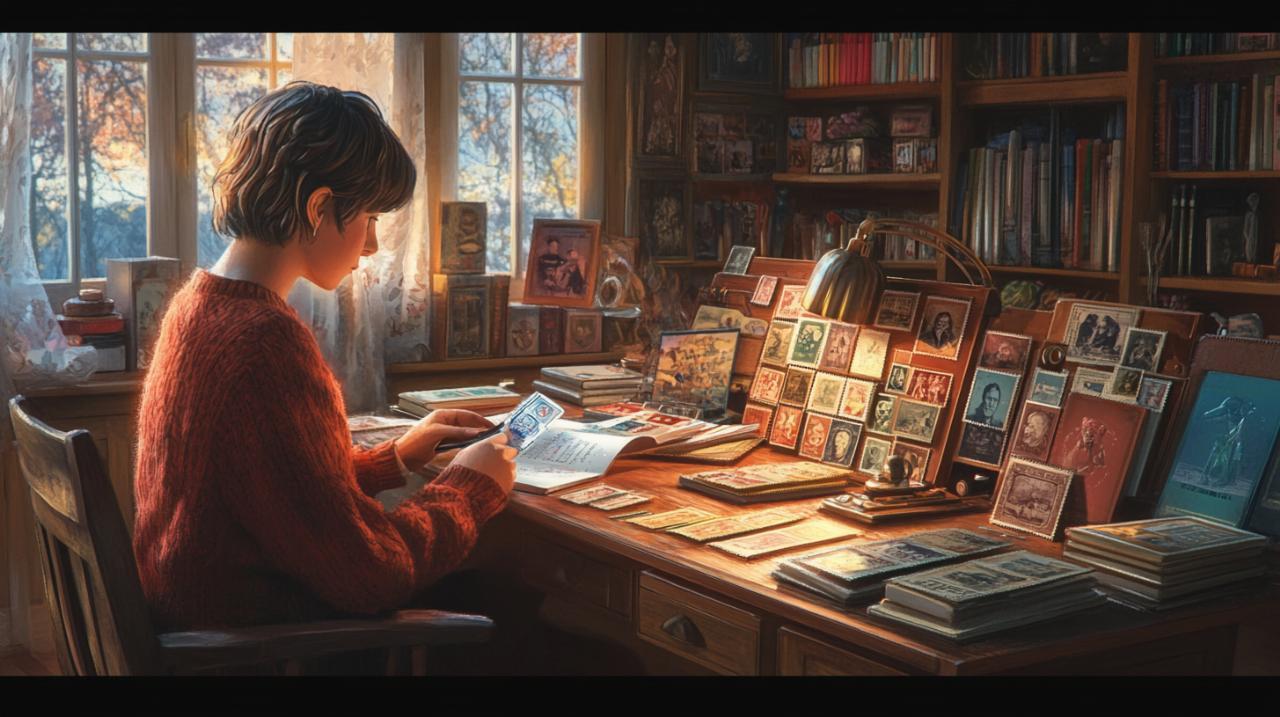Stamp collecting opens doors to a fascinating world where history meets artistry. This enriching pursuit connects people with the past through tiny pieces of paper that tell grand stories.
Basic Equipment and Materials
Starting a stamp collection requires specific tools and materials to ensure proper handling and preservation of these delicate items. The beginner’s guide to start stamp collecting teaches enthusiasts the fundamentals of this rewarding hobby.
Essential Tools for Stamp Handling
Stamp tongs represent the most vital tool in a collector’s arsenal, preventing natural oils from damaging stamps. A quality magnifying glass helps examine intricate designs and identify rare varieties. The hobby attracts over 20 million collectors worldwide who use these basic tools to inspect their specimens.
Storage Options and Protective Gear
Quality stockbooks serve as the foundation for preserving stamps safely. Stamps need storage in high, dry locations to maintain their condition. Many philatelists opt for specialized albums with protective sleeves, while others use gummed hinges to secure their treasures. The Penny Black, dating from 1840, stands as proof that proper storage ensures stamps can survive generations.
Finding and Acquiring Stamps
Stamp collecting, or philately, opens up a world of historical treasures and artistic beauty. Start your journey by choosing a specific focus, like British Commonwealth stamps or thematic collections featuring flora and fauna. The stamp world offers diverse options, from the iconic 1840 Penny Black to modern commemorative issues.

Sources to Obtain Unique Stamps
Stamp dealers serve as reliable sources for building your collection, offering authenticated pieces and expert guidance. Explore auctions hosted by respected firms like David Feldman, where rare finds often surface. Digital catalogues and online stores provide access to stamps from global markets, while philatelic societies connect collectors and facilitate trades. Many dealers offer benefits like first-order discounts, and most accept multiple currencies for convenient transactions.
Tips for Evaluating Stamp Quality
Master the basics of stamp assessment using proper tools – tongs prevent damage from handling, while magnifying glasses reveal crucial details. Learn to recognize various conditions: mint stamps retain original gum, while fine-used pieces showcase clean cancellations. Study watermarks, which authenticate stamps and enhance their value. Store your collection in stamp albums or stockbooks, placing them in dry environments to maintain quality. Professional catalogues aid in identifying valuable characteristics like perforations, overprints, and plate blocks.
Building Your Knowledge Base
Building expertise in stamp collecting opens doors to a fascinating world embracing history, art, and discovery. Starting your philatelic journey requires a solid foundation of knowledge about stamps, their origins, and their significance. The Penny Black, issued in 1840 by Great Britain, marks the birth of this enriching pursuit that now captivates over 20 million enthusiasts worldwide.
Understanding Stamp Values and Rarities
Stamp values fluctuate based on multiple factors, from condition to historical significance. Mint stamps often command premium prices, while fine-used specimens attract specific collectors. The British Guiana 1c Magenta stands as the most coveted piece, demonstrating the heights of philatelic value. Monitoring auctions, consulting current catalogs, and connecting with established dealers like David Feldman helps grasp market dynamics. Collectors must master condition grades, recognizing elements like watermarks and perforations that impact worth.
Learning Philatelic Terminology
Mastering philatelic language enhances your collecting experience and enables meaningful interactions within the community. Key terms encompass perforation measurements, gum conditions, and overprint variations. Stockbooks and albums serve as primary storage solutions, while tongs and magnifying glasses become essential tools. The philatelic world offers numerous resources through Linn’s Stamp News, Gibbons Stamp Monthly, and digital platforms like StampWorld.com. Joining societies grants access to specialized knowledge and connects you with fellow enthusiasts who share their expertise.

